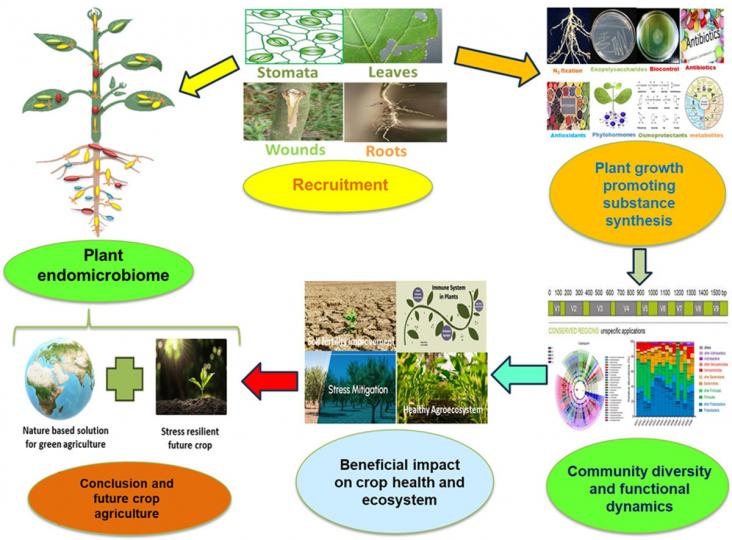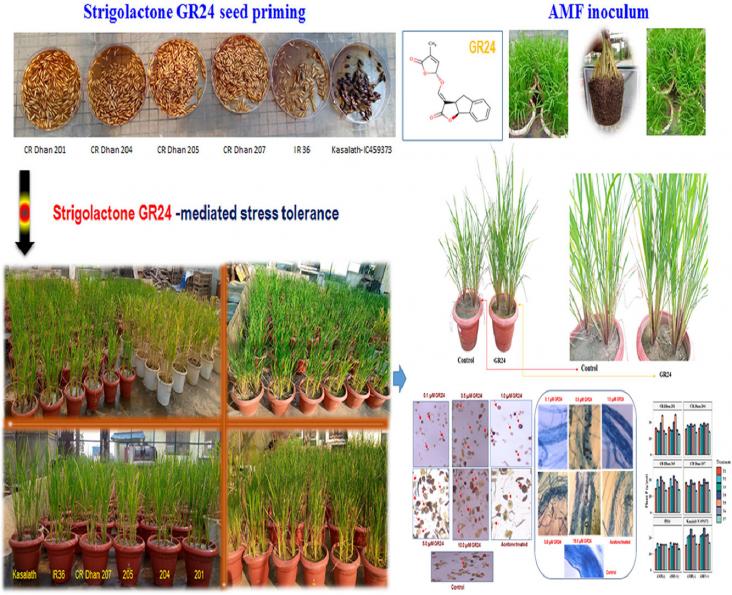How to reduce human-wildlife conflixt through education
Shows behavioural and physiological responses to habitat change

Plants have a microbiome, a diverse community of microorganisms, including bacteria, fungi, and viruses, living inside and on their tissues. This review article contains deeper insight in endomicrobiome related research work in last years, recruitment, niche development, nutrient dynamics, stress removal mechanisms, bioactive services in plant health development, community architecture and communication, and immunity interplay in producing stress resilient future crop.

Strigolactones (SLs) are a new class of plant hormones that play a significant role in regulating various aspects of plant growth promotion, stress tolerance and influence the rhizospheric microbiome. GR24 is a synthetic SL analog used in scientific research to understand the effects of SL on plants and to act as a plant growth promoter.
A discussion on how well Emojis reflect biodiversity, and how this should be improved to contribute to public engagement and communication.
Illegal Wildlife Trade (IWT) is among the most lucrative illegal industries in the world and is a significant driver of biodiversity decline. This paper outline the basics of IWT and discuss its cascading consequences on environments, human lives and communities, national stability, and the economy.
A sustainable future requires securing of the fundamental relationship between humans and biodiversity. This article highlights the importance of tapping into Indigenous and local knowledge for the conservation of biodiversity
A study published by Mukhopadhyay et al., 2023 investigates the long-term impact of subsurface drainage (SSD) on soil quality restoration and sugarcane productivity in waterlogged saline Vertisols in India. By using soil and water samples together with a farmer field survey, the authors showed that SSD significantly reduced soil salinity and improved various soil properties, leading to increased sugarcane yields by up to 585.5%. Farmers' perceptions indicated that SSD technology could substantially improve soil conditions and crop yields, and large-scale adoption of the technology will support the Sustainable Development Goals related to Land, No Poverty, and Zero Hunger in saline soils of India.
Elsevier,
Safeguarding Mountain Social-Ecological Systems, A Global Challenge: Facing Emerging Risks, Adapting to Changing Environments and Building Transformative Resilience in Mountain Regions Worldwide, 2024, pp 11-15
This chapter advances the UN SDG goals 13 and 15 by reviewing the unique species assemblages of high-elevation ecosystems and biodiversity trends in the context of climate change.
Knowledge of biological diversity is a major source of innovation. Collective intellectual property of traditional knowledge by Indigenous peoples and local communities is an important source of innovation and product development. This article investigates collective intellectual property systems on the traditional knowledge of Aspalathus linearis, also known as rooibos—an endemic plant from South Africa which is the basis of an important herbal tea industry. The article discusses how collective action and self-organization can generate collective intellectual property systems; indigenous peoples and local communities can develop these systems to protect their IP; how these systems can promote social justice and a more equitable distribution of benefits but can be sources of dispute between socio-economic groups and communities and can reproduce historical inequalities and power asymmetries.
